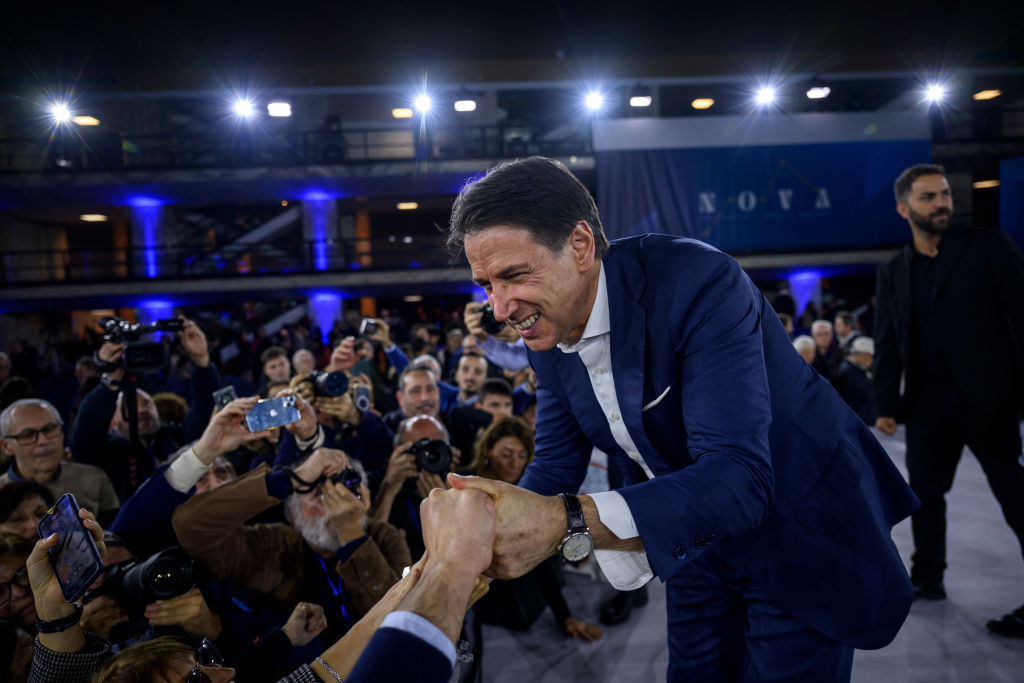Following last June’s European Union (EU) elections, Italy again has a party in the EU-wide Left group. This presence owes not to one of the many parties of Italy’s postcommunist diaspora but to the Five Star Movement (M5S). This may seem surprising, given M5S’s earlier history. After its first electoral breakthroughs, following the 2014 EU elections it joined the Eurosceptic alliance led by Brexiteer Nigel Farage; after the next election, in 2019, its elected members did not join any group at all.
M5S has in recent years mounted a “progressive” turn under leader Giuseppe Conte, from 2018 to 2021 prime minister in two different M5S-based coalitions. Since environmentalism soon became a focus of Conte’s leadership, M5S might have been expected to join the Green alliance, had it not been for issues of war and peace. While M5S is against arms shipments to Ukraine and sharply critical of the Israeli government, the EU-level Green group is dominated by its German party’s uncritical pro-NATO boosterism.
Then followed an unsuccessful bid to form a separate group with parties with comparable foreign policy positions, such as Sahra Wagenknecht’s party in Germany and that of Slovak prime minister Robert Fico. Yet there were not sufficient forces to build a formal EU-level group.
It was then that M5S reached an understanding with the Left in the EU parliament. But is M5S now a left-wing party — and why such an apparently drastic change?
The Five Star Movement first established itself as an archetypal “populist” critic of the (neo)liberal…
Auteur: Tommaso Nencioni

